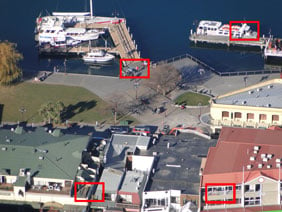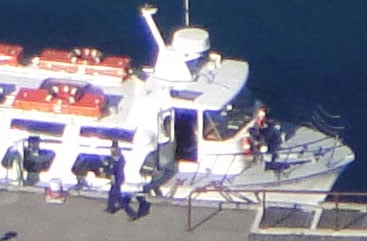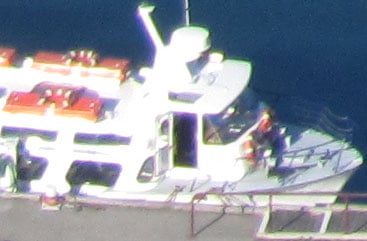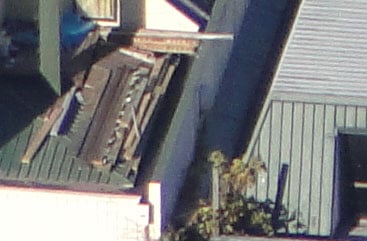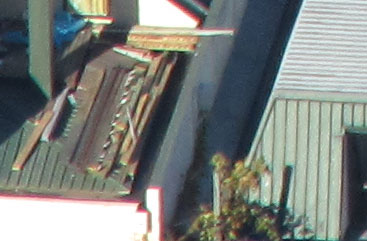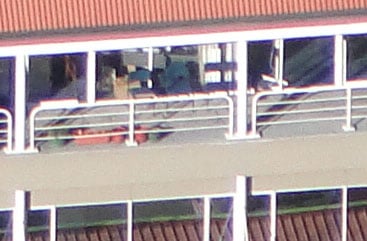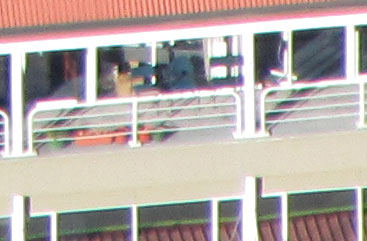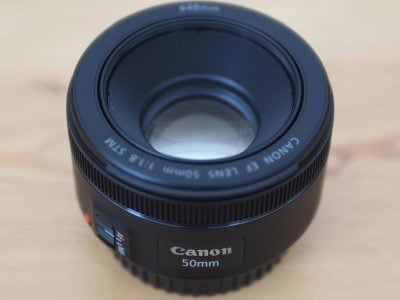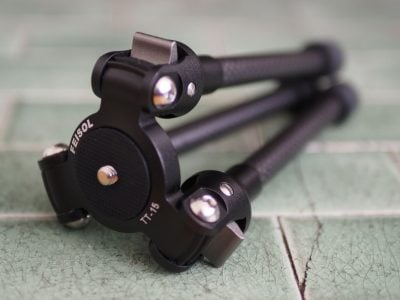Sony Cyber-shot DSC-HX1
-
-
Written by Gordon Laing
Sony Cyber-shot -HX1 vs Canon SX1 IS vs EOS 450D / XSi Resolution
Sony Cyber-shot DSC-HX1 vs Canon PowerShot SX1 IS real-life telephoto
First things first: the composition above was taken from the same location as our first shot at the top of the page, albeit with the cameras tilted down a little. So take another look at our first shot and start at the bottom of the image in the middle and work your way up until you reach the corner of the inlet – that’s what you’re looking at here in close-up. It really demonstrates the massive optical zoom range you have at your disposal, but the big question of course is whether the quality is compromised. Both cameras actually share the same 28-560mm equivalent zoom range, but the Canon crops show a slightly smaller area due to its slightly higher resolution. Starting with the first row of crops, both cameras are clearly suffering from some coloured fringing, but the Canon SX1 is noticeably softer in the corner than the Sony HX1, while also losing more highlight detail. This softness continues, albeit to a lesser extent, on the second row of crops, where the Sony is again sharper. The Sony is however exhibiting greater noise and processing artefacts here. Interestingly in some areas one camera resolves more than the other. The Canon does better on the blue sign in the lower left, but the Sony is better in the sign at the bottom left corner and the fencing around it. On the third row of crops we continue to see the Sony delivering a sharper but noisier image compared to the Canon which is a little softer, while also suffering from worse fringing here. The same applies on the fourth and final row of crops taken from the lower right corner, although as in the first row, the Canon’s softness is more pronounced. So in this particular test, the Sony HX1 comes out on top, so long as you’re happy with greater noise and processing artefacts. Now let’s see how they compare in terms of studio resolution in a controlled environment.
|
Sony Cyber-shot DSC-HX1 results continued…
Real-life resolution / Studio resolution / High ISO Noise
|
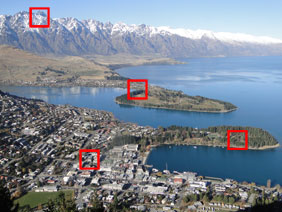 | To compare real-life performance we shot the same scene with the Sony Cyber-shot DSC-HX1, Canon PowerShot SX1 IS and Canon EOS 450D / XSi within a few moments of each other using their best quality JPEG and lowest ISO settings. The lenses on each camera were adjusted to deliver the same vertical field of view. The image left was taken with the Sony Cyber-shot DSC-HX1 at 6mm f4 and with a sensitivity of 80 ISO; the original 9M JPEG measured 3.94MB. The crops are taken from the areas marked with a red square and presented here at 100%. |
Note the Canon 450D / XSi captures wider 3:2 aspect ratio images, so by matching the vertical field of view, we’re effectively treating the DSLR here as a 10.8 Megapixel camera, delivering 4:3 shaped images. Even then it still has the highest ‘effective’ resolution of the three, hence the smallest areas in the crops below.
The Cyber-shot HX1 and PowerShot SX1 IS are major rivals, offering 20x super-zoom ranges, along with CMOS sensors which allow HD movie recording and fast continuous shooting. We’ve also included results from a popular DSLR here to see how its image quality compares.
Starting with the first row of crops taken from the snowy mountain ridge in the upper left corner, the Sony HX1 is suffering a little from softening compared to the Canon SX1 IS, although both are exhibiting some coloured fringing. The Canon EOS 450D / XSi is also suffering from fringing here, and while this isn’t unusual for high-contrast subject matter like this, it’s a shame not to see any of them perform in-camera corrections, like Panasonic’s Lumix FZ28, or Nikon’s DSLRs.
Moving onto the second row of crops you’ll see one of the typical differences between a compact and a DSLR: the former typically apply greater sharpening by default, leaving the latter often looking quite soft in comparison. This is quite apparent here, although the sharpening applied by the super-zooms here also reveals subtle noise textures. Despite only having one Megapixel in its favour over the Sony, the Canon SX1 IS is resolving slightly greater real-life detail here, although there’s not much in it.
Heading to the third row of crops and you’ll see a repeat of the sharpening strategies above, except with optical differences now also playing a part. The two Canons are suffering from optical softness here, especially the kit lens on the EOS 450D / XSi, and in this particular row the Sony HX1 comes out on top.
In the fourth and final row of crops, the difference in sharpening between the super-zooms and the DSLR is again apparent, as is visible noise on the former models. This is particularly visible in the darker roofing areas in the Sony sample, where it looks relatively noisy compared to the others. While we’re sadly getting used to seeing some noise textures even at the lowest sensitivities on compacts, the Sony HX1 definitely suffers a little more than the Canon SX1 IS in this regard.
In the meantime, the DSLR performs as expected with a kit lens that disappoints in some aspects and a default strategy for less sharpening than a compact. To really see the image quality benefit of a DSLR, you’ll ened to either fit it with a higher quality lens, or compare it at higher sensitivities – and the latter is what we’ve done in our High ISO Noise results page.
But before then, scroll down this page to see how the Sony HX1 and Canon SX1 IS compare when fully zoomed-in to their maximum focal lengths. Or head to our Studio Resolution page to see how they compare in a controlled environment.
Sony Cyber-shot DSC-HX1 |
Canon PowerShot SX1 IS |
Canon EOS 450D / Rebel XSi | ||
 |
 |
 | ||
f4, 125 ISO |
f4, 80 ISO |
f8, 100 ISO | ||
 |
 |
 | ||
f4, 125 ISO |
f4, 80 ISO |
f8, 100 ISO | ||
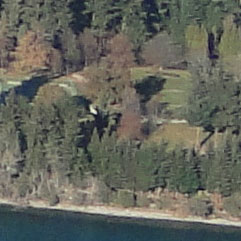 |
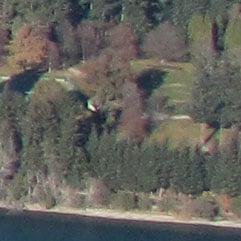 |
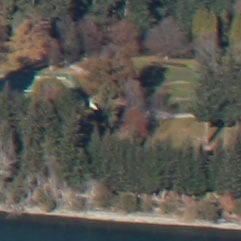 | ||
f4, 125 ISO |
f4, 80 ISO |
f8, 100 ISO | ||
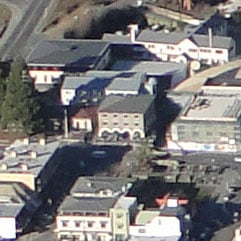 |
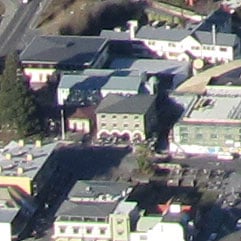 |
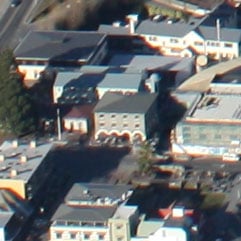 | ||
f4, 125 ISO |
f4, 80 ISO |
f8, 100 ISO |
